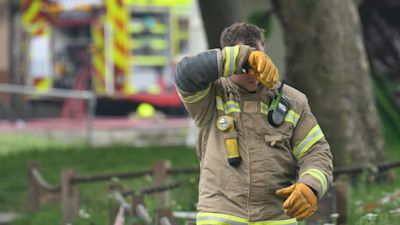North East fire service stretched with engines left in stations due to Omicron staff shortages

Almost a fifth of fire engines have been out of action in parts of the North East this week, as fire services deal with staff shortages due to the spread of Omicron, a union has said.
Figures show that the North East had the highest rise in Covid cases last week, with 1 in 10 people in the North East testing positive.
In Cleveland, 18 fire engines should be available for use at any one time, but only 12-15 were available recently, according to the Fire Brigades Union (FBU).
Fire and rescue staffing levels in the North East were already being impacted by job cuts in recent years, with both Cleveland and Tyne and Wear losing over one in three of its firefighters between 2010 and 2021.
FBU regional secretary for the North East, Brian Harris, said: “Covid is hitting the fire and rescue service hard, with fire engines left out of use in their stations – but this is entirely avoidable.
“A fire and rescue service with sufficient levels of staffing and decent levels of resilience would be able to continue past these challenges.”
He added: “But across the country we’ve had one in every five firefighters cut since 2010 as financial constraints have hit, so we aren’t in that position.
“It’s entirely unclear how the government thinks it is acceptable to have a fire and rescue service with such a low level of resilience.”
Tyne and Wear Fire and Rescue Service (TWFRS) currently have 4% of staff absent due to covid, but are reassuring communities their services are not being impacted. A TWFRS spokesperson said: “Like any large organisation, we have had Coronavirus-related absences to deal with throughout the pandemic, however, we have remained resilient throughout.
"We have strict control measures in place to mitigate the transmission of the virus that go beyond the restrictions that have been in place for our communities. We want to reassure residents in Tyne and Wear that we have contingencies in place that will ensure those in need will always receive an emergency response when they need it.
"The level of absences relating to Coronavirus remain at around 4% of the workforce, which is a manageable level. There has been no impact on the delivery of our services, including the number of appliances we have had on the run.
"We would also reiterate that throughout the last two years we have deployed staff to assist the NHS, we currently have staff working in the lighthouse lab and we have distributed more than 30,000 lateral flow tests. This is a testament to our operational and service wide resilience."